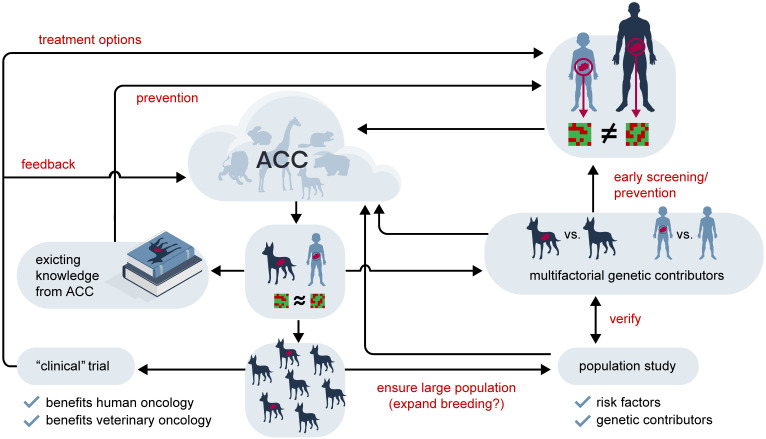Figure 4.
The potential future value of the Animal Cancer Cloud in the treatment of rare cancers. Rare human tumours which are too distinct in their (epi)genetic characteristics to allow the application of findings from common tumours might have analogues in animal cancers. Shown here as an example is a generic paediatric tumour compared to an adult disease, but this line of reasoning holds true for rare adult tumours, such as, for example, a Juxtaglomerular cell tumour, as well. Using the data accumulated in the Animal Cancer Cloud (ACC) an animal homologue with similar characteristics might be identified. If this is the case historical records might yield information beneficial for humans with regards to potential risk factors and treatment strategies. Information from the animal population might also be used in concert with human genetics to identify multifactorial genetic contributors to this cancer type, potentially leading to an early screening/prevention strategy in the at-risk human population. If the selected a) animal fulfils certain prerequisites, such as short life span and small body size and a large enough population exists or can be bred and b) the tumour is common enough or can be induced a clinical animal trial can be envisioned, where treatment options are evaluated in a genetically diverse population with the disease in its natural environment. It is expected that such trials would be superior to the traditional pre-clinical in vivo models and would allow a more efficient preselection for the clinical evaluation in humans. They would, of course, also create more data for the ACC. Finally, a population-based study would also produce additional information on associated risks for the animal tumour which could also contribute to our understanding of its human counterpart.

